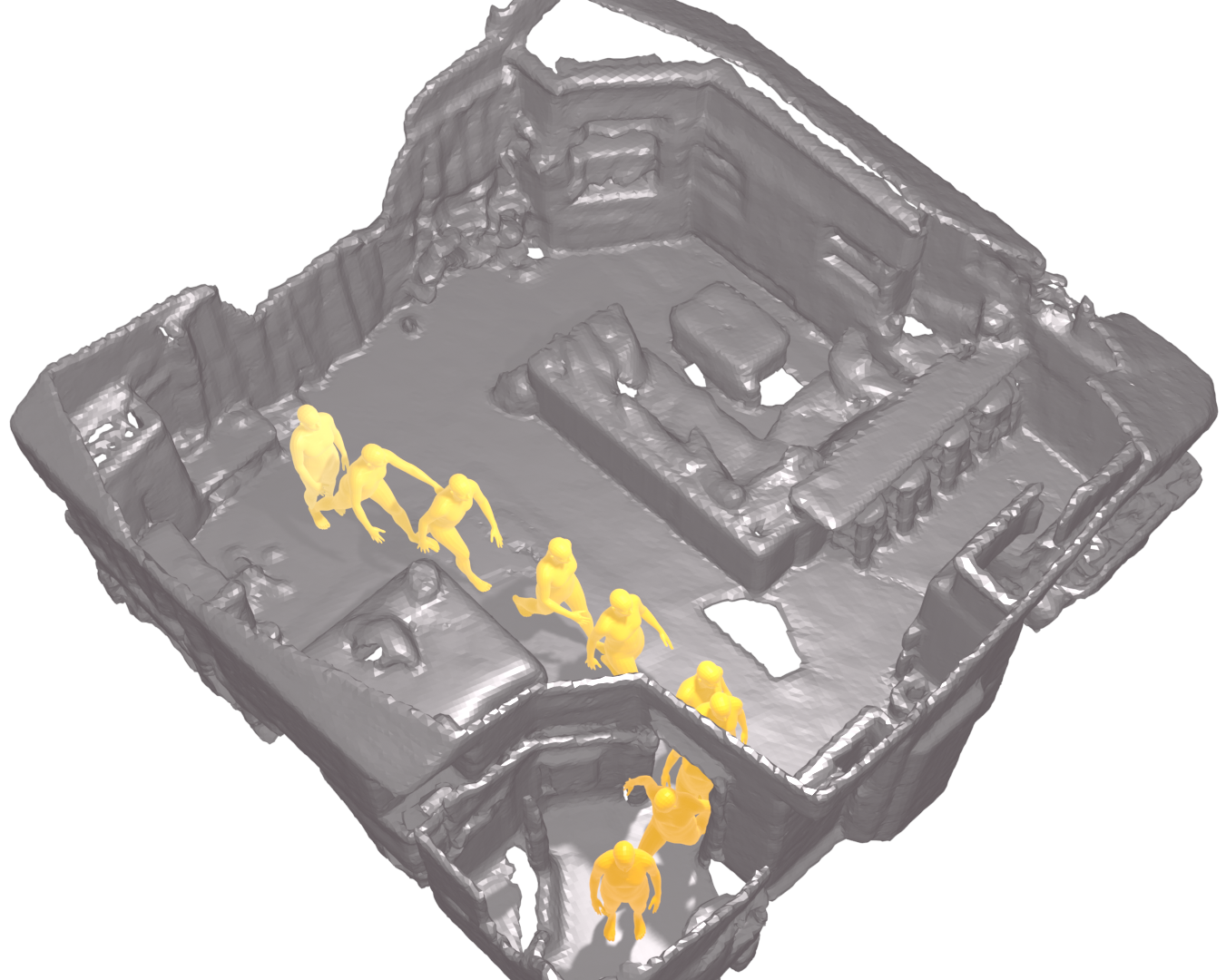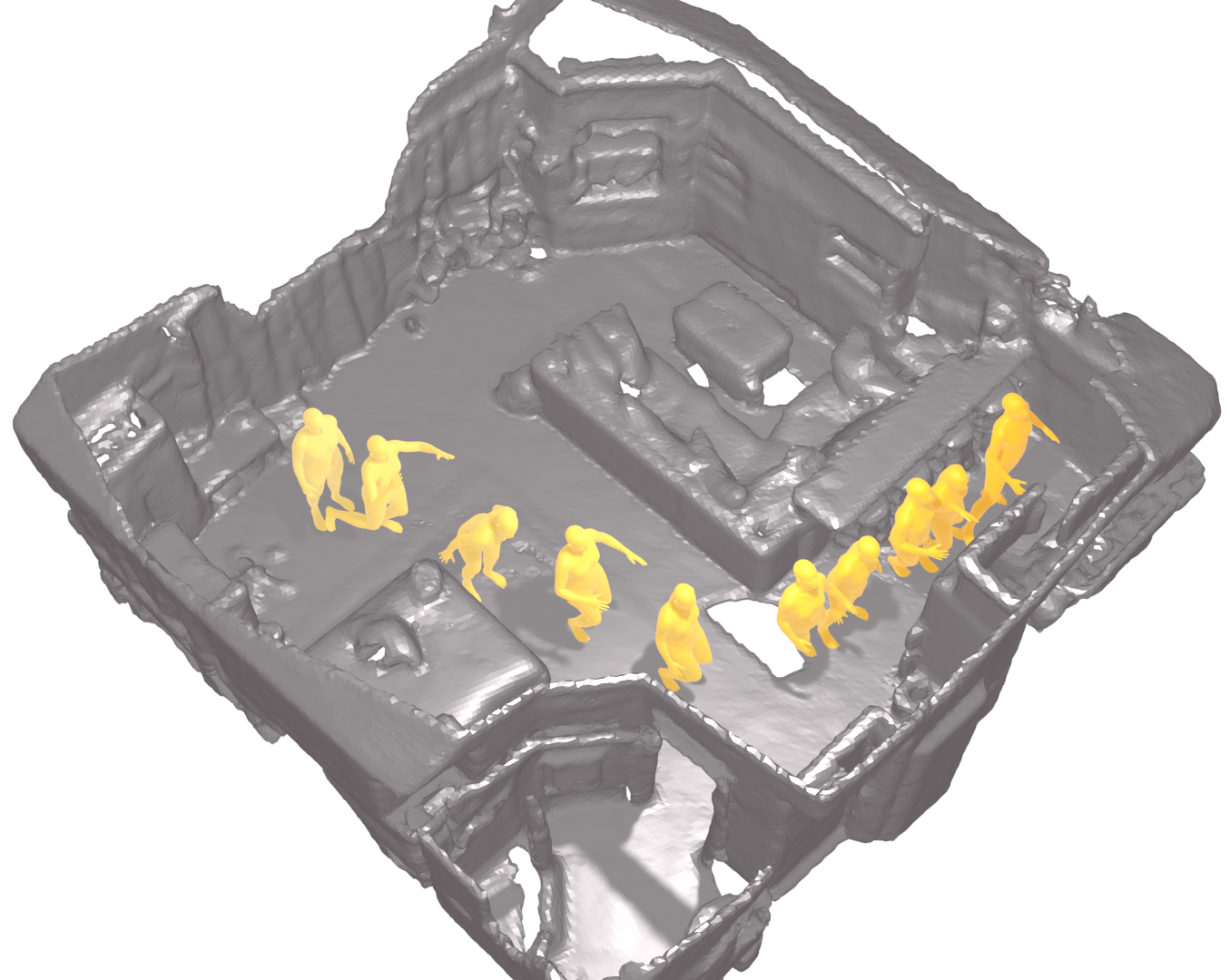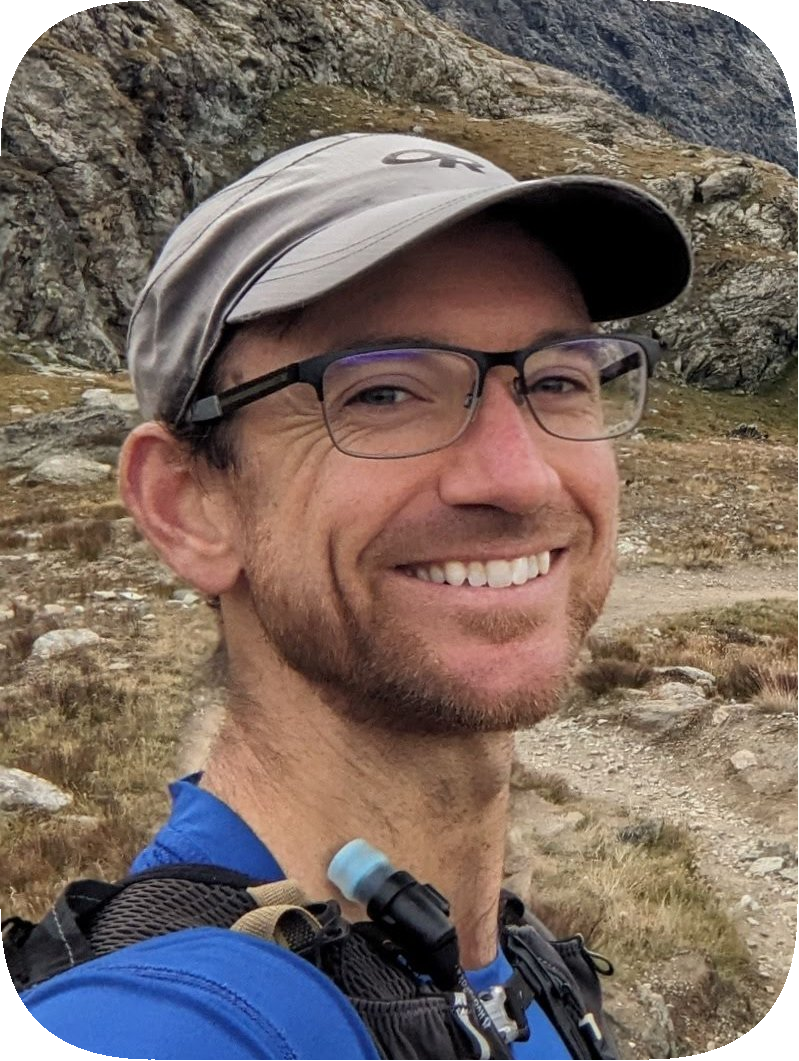Human Motion Synthesis with Diffusion Models in Real Environments
Abstract
This was a group project for the Digital Humans class at ETH. We extended a method called Diffusion Noise Optimization (DNO) and generate realistic human motions in real-world scenes with multiple, complex-shaped obstacles. Our project was to build on top of the Diffusion Noise Optimization paper and integrate the diffusion generation with realistic environments.
My Contributions
- All the work to get the model initially running and training against a Signed Distance Function representing an environment
- Integrating with the real world scans
- Creating an automated pipeline, enabling bulk running of different environments and configurations
- Implementing evaluation metrics
- The ablation study
Results
- Implemented three different SDFs and tested on multiple scenes
- Able to reach the goal 94% of the time with a 20% increase in foot skating ratio compared to DNO
- Saw an average 20% loss in semantic accuracy preservation compared to DNO
- This is expected, as the obstacles were more complicated than in DNO, and there’s a tradeoff between preserving accuracy and avoiding obstacles
- Accurately preserved semantic content for all the tested behaviors: Walking, Crawling, Jumping, and Walking with Raised Hands
Example Results


*Note: The code is private is because we were given early code access and couldn’t fork the actual repo. I don’t want to publish it publicly unforked and potentially cause any confusion or not give proper credit. The now-public original DNO code can be found here. I am happy to give access to my repo if you are curious to evaluate my own personal work.


